Most comedies in this world will pass by in the long river of time, but Chaplin and his movies are always unforgettable.
Chaplin’s works always give us complex feelings after laughing.
As Zhao Lihong, the author of this article, said: "When you are not in the world, watching Chaplin’s movies is only funny, funny and full of joy. Grow up a little, look again, laugh and cry, feel warmth, and feel compassion. "
The character who bears this complex emotion in the film is one of the most important roles since the comedy film was born-the gentleman tramp played by Chaplin: Charlot.
He has a hat on his head, oversized shoes, tight clothes, fat pants and a civilized stick in his hand … Yes, everyone remembers him, because "in Charlot, we saw ourselves who were lonely, hardworking, but never successful".
How did Chaplin finally create the classic image of "Charlot" on the basis of his wandering growing experience in his youth? And why can "Charlot" impress generations of audiences in 100 years?
In the following, we will explore these issues together and review the classics of film history created by Chaplin …
The following excerpt is from Seven and a Half Directors, with the subtitle drafted by the editor and pushed by the publishing house.
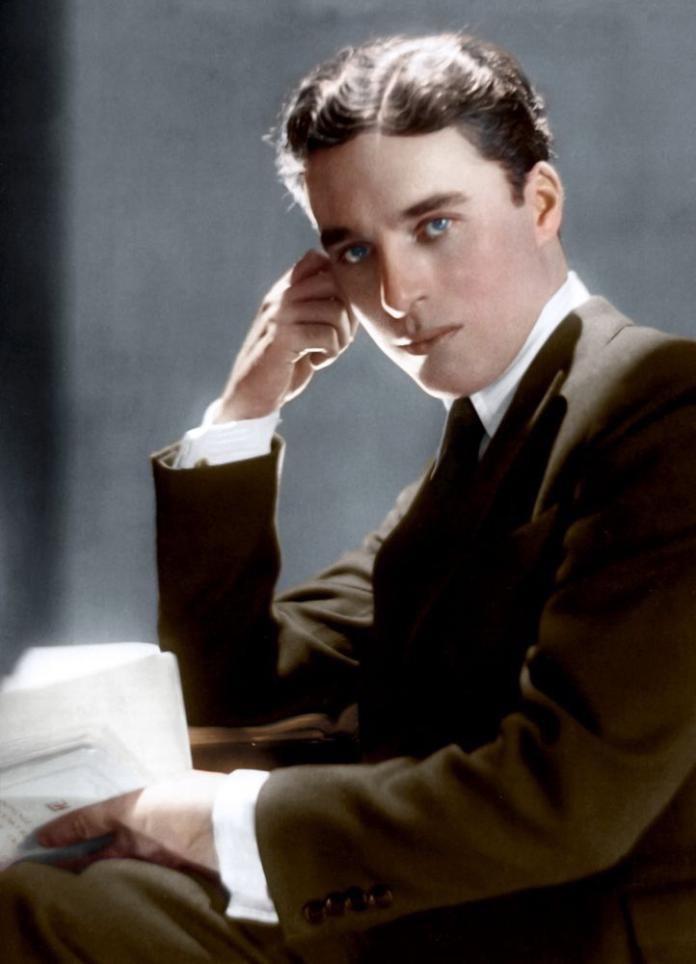
Charlie Chaplin
Of human nature, the most human
-Chaplin and His Movie World
Text | Zhao Lihong
1. Happiness originates from sadness.
Watching Chaplin’s movies when nothing is going on is just funny, funny and full of joy. Grow up a little, look again, laugh and cry, feel warmth, and feel compassion.
Every time I see the same details, for example, in the scene of Charlot, a glassmaker, and his son escaping from the police in The Story of Finding a Fairy, the son rolled to his father like a ball, as if there was a thread holding him, but his father kicked him away, but he couldn’t get rid of the sticky sugar, so he laughed.
See "City Lights" in which a blind girl touches the hand of Charlot, a tramp, "recognizes" him and says "it’s you", and cries.
What is the charm of Chaplin and his movie world, which can make audiences of different ages and cultural levels all laugh, or wipe their tears, and watch it many times without getting tired?
Now that I think about it, as for the state of being skilled, it seems that it is not so important. The most important thing is that his heart is so soft and full of love and affection for people and the world. He has such a deep insight into the world, predicts the future and deeply understands all kinds of human nature …
Yes, it was Chaplin’s movies that made me feel love, warmth and pity at the earliest, and let the southern girl know that happiness originated from sadness, and sadness is for endless joy; It is also Chaplin’s movies that make me, who is over 500 years old and gradually aging, realize loving and being loved, and realize more loneliness and anxiety and fear everywhere …
When I wrote these words, the little man in a bowler hat appeared in front of my eyes, smiling shyly, feminine and neurotic, which seemed to transcend time and seemed to freeze at a certain point in time; He raised his eyebrows and stared at his round eyes, just like Calvero at the end of his life in "Stage Life", with his eyes wide open and looking at the audience. Those eyes are full of so much desire and novelty, so affectionate, so lonely and so frightened …
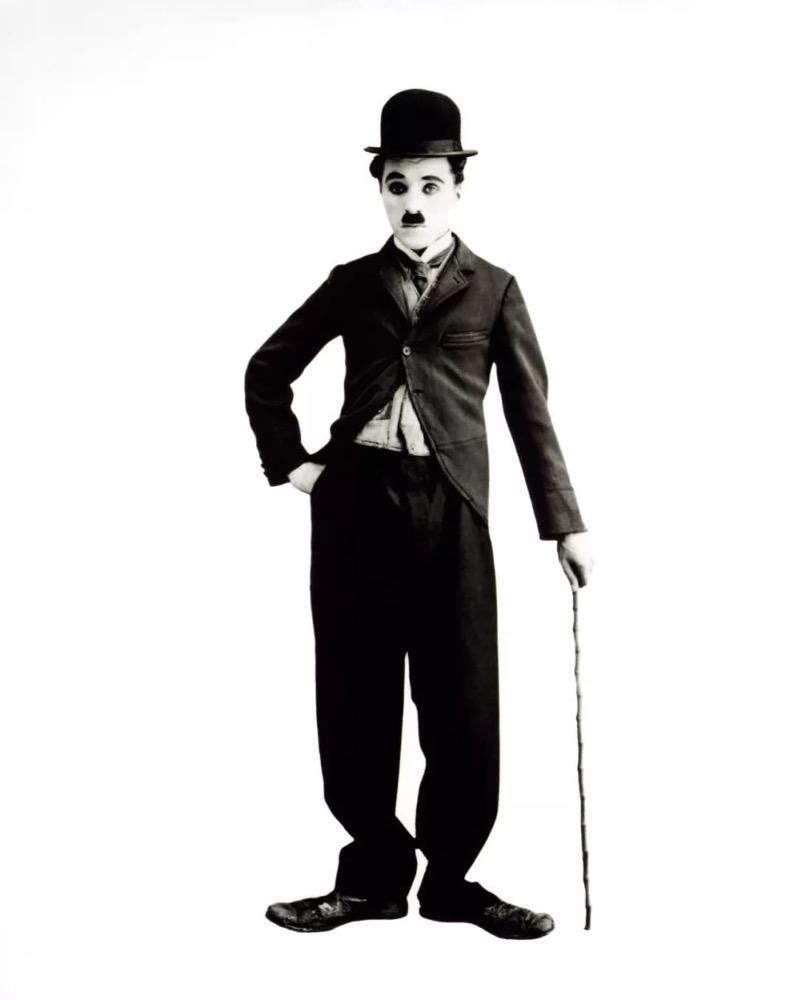
The Classic Comedy Image Created by Chaplin —— Charlot
Second, the comedy master’s boyhood
Charlot, a symbolic figure, has a unique style.
Look at this iconic outfit:
He wears a round hat (even if he runs away in a hurry, he doesn’t forget to pick up the falling hat, bow and put it on, which has the demeanor of "the gentleman dies and the crown is inevitable");
A pair of broken gloves (in the story of finding a son and meeting a fairy, someone upstairs dumped garbage and soiled these gloves and had to throw them away);
Leaning on a bamboo cane (a gentleman’s civilized stick is a gentle wave of his hand, high above and bossing around, but in the hands of a tramp, there is more than one thing, but sometimes it is a crutch to support a hungry tramp);
Too narrow and tight coat shows holes, which can’t cover a pair of baggy trousers (in the opening ceremony of "City Light", these trousers were stabbed by the sword of the idol and have been broken ever since);
A pair of extra-large leather shoes (in The Gold Rush, a shoe is boiled and eaten; In "Stage Life", Calvero gave these shoes a close-up, recreating their glory, aging and death.
This mismatch makes Charlot look funny from head to toe. He has tall eyebrows, wide eyes, a funny trapezoidal black beard (Chaplin said that beard symbolizes vanity) and waddles with duck steps.
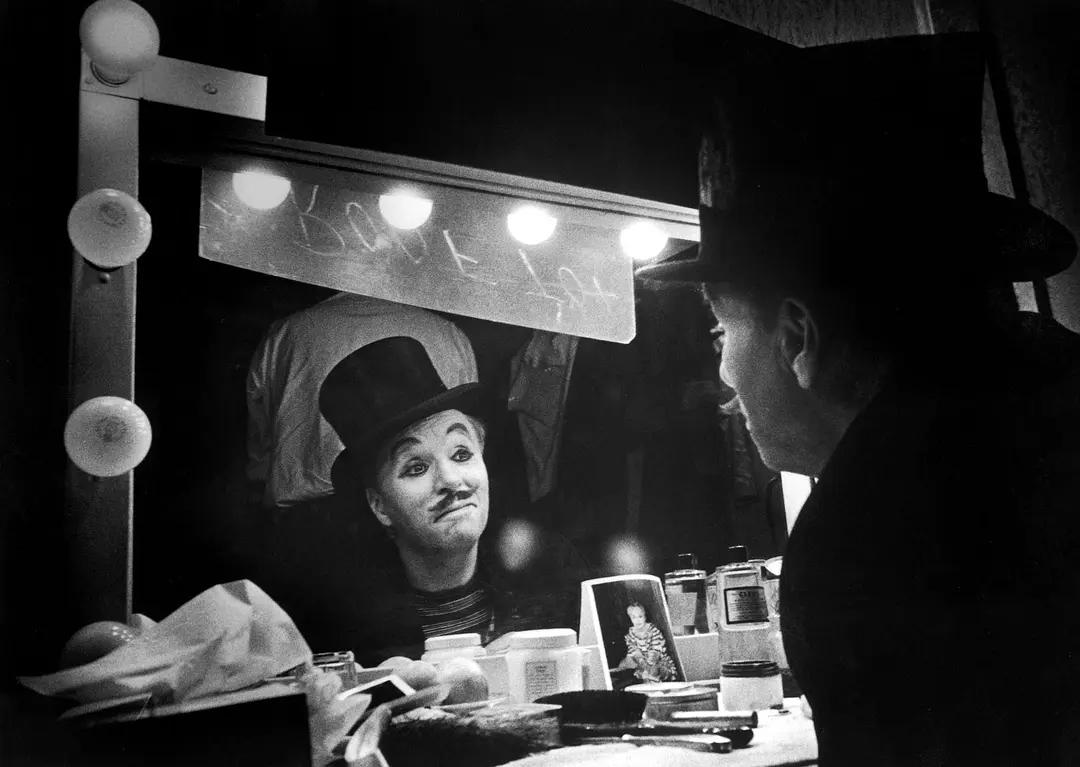
Stage Life, filmed in 1952, tells the story of an old and declining comedian and a young ballerina. Chaplin plays the comedian Calvero.
Charlot’s walking posture was not created by Chaplin, nor did Chaplin adopt this image from the beginning. He used to play various roles under the name "Charles" (French) or "Chas" (British abbreviation), and only after he appeared in more than ten films did he decide to adopt this stylized costume, typical facial makeup and walking posture. He changed his name to "Charlie" and the French publisher translated it as "Charlot".
From then on, a stylized and eternal Charlot was born, and audiences all over the world will always remember Charlot. At first, Chaplin couldn’t clearly grasp the personality of Charlot. Once he put on the costume that belongs to Charlot alone, he seemed to get mysterious hints, his imagination stretched, and jokes poured out one by one, making Charlot whole.
Chaplin explained Charlot like this:
You see, this is a man with multiple personalities. He is a tramp and a gentleman; He is a poet and a dreamer. He is lonely, longing for romance and adventure. He expects others to regard him as a scientist, musician, or a duke and a polo player. In fact, he can only pick up cigarette butts and grab children’s candy. When he is extremely angry, he will seize the opportunity to kick those ladies’ ass. (Autobiography of Chaplin)
This Charlot that Chaplin said is himself. Indeed, Charlot created by Chaplin in his early days has his own shadow. In other words, Charlot was born from Chaplin’s life experience.
On April 16th, 1889, Charles Spencer Chaplin was born in East Street, Wolves District, London. His family first lived in a nice house in St George’s Road West Square, Lambeth District, and later lived in 287 Kennington Road and 3 Barnard Lane.
His father, Charles Chaplin Sr., is the "leading singer" of the troupe. He has toured in Britain, the United States, France and other countries, and became famous for singing grotesque alto.
His mother, Hana Hill, took the stage at the age of 16. Chaplin said that when she danced, her posture was "amazing", and she was good at singing and dancing, and she was very talented in drama performance. "Her vivid expression and tone are really beyond the reach of ordinary people";
After their parents got married, they performed funny duets together in various amusement parks in Britain, which was very popular.
Obviously, Chaplin’s acting talent is inherited from his parents. Most importantly, he remembered his mother’s words, "First of all, we should do well what we should do in this world."
He remembered:
That afternoon, in that gloomy basement, my mother brought the unique kindness light in this world into my heart. Only in this light can the theme of love, kindness and humanity in literature and drama be so great, rich and brilliant. (Autobiography of Chaplin)
This is also the earliest reason why Chaplin’s films are full of kindness and humanity.
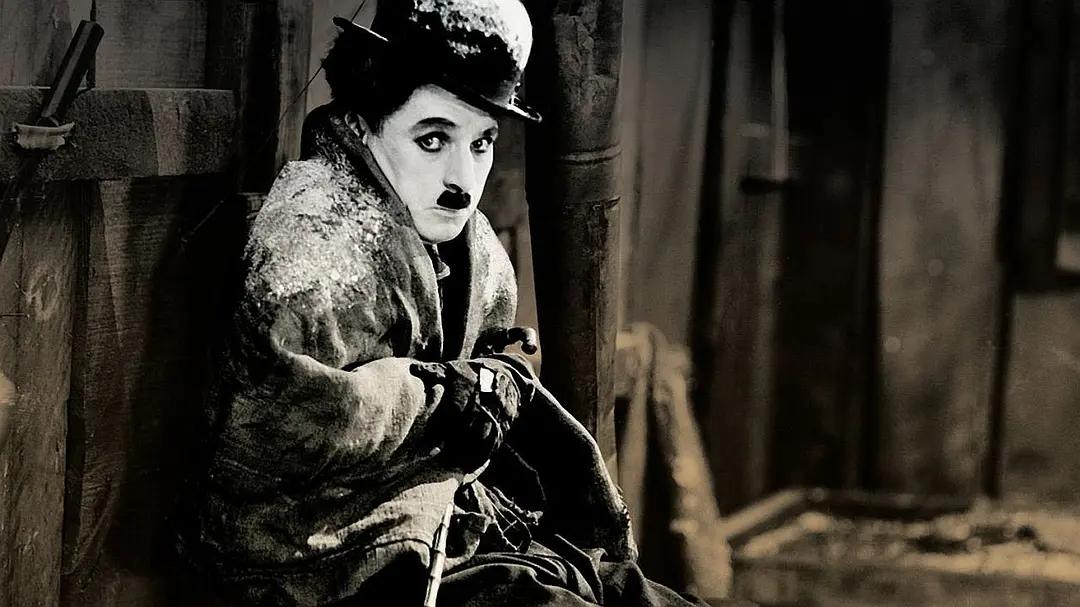
In 1925, "The Gold Rush" tells the story of a tramp from gold panning to becoming a rich man and harvesting love. Chaplin plays the tramp Charlot.
The happy life of Chaplin’s family lasted only about four years.
Because of his father’s alcoholism, his parents finally separated, and old Charles lived with another woman, and his health gradually deteriorated and he fell into poverty. Before he died at the age of 37, someone else organized a welfare performance for him. Chaplin later organized a benefit performance for old Calvero in "Stage Career". Calvero died on the stage. He was once a lonely father and an aging Chaplin.
Chaplin longed for his father’s love all his life.
After the separation of parents, mother lost her voice and couldn’t perform on stage any more, so she had to mend clothes to support the Chaplin brothers. Mother finally lost her mind and was sent to an insane asylum several times.
Young Chaplin (7 to 12 years old) faced two possibilities:
First, he was sent to an orphanage, first to the Rambes Institute for the Poor, and then to the Hanwell School for the Poor and Orphans (three children who lost their fathers in Modern Times and the little street children in The Search for a Fairy);
One is sent to prison (the girl who steals bananas and bread in Modern Times).
The Chaplin brothers lived in constant fear, and for a period of time, they became little vagrants in Kennington block, picking up fruits and vegetables in market ditches and sleeping on benches in squares or parks. Before the age of 12, in order to support his family, Chaplin worked as a newsboy, a printer, a toy vendor, a clinic helper, a glass-blowing apprentice, and a small actor in Lancashire Theatre …
"Life makes him feel like a blind mouse cornered, waiting for his own club." (Joseph Conrad)
This riff-raff experience, the taste of hunger, bullying, being hurt, fear, loneliness and longing for love became the starting point of all Chaplin’s films. "Although he is not the only director who depicts hunger, he is the only one who has personally experienced the taste of hunger" (andre bazan).
After he became famous all over the world, he never confessed his childhood experience. In 1943, Chaplin wrote this in a letter of condolences to the citizens of London who were bombed by Hitler:
I will always remember Lambeth, and I will always remember the room in the attic No.3 in Bonaire Lane where I spent my childhood. At that time, I kept climbing up and down the three-story stairs to pour dirty water, and now it is still in front of my eyes.
Hayley, the grocer in Chester Street, seems to be just around the corner now; I used to buy ten catties of coal and a penny of vegetables. I still remember Huasong, who sells meat, who can buy some leftover meat for a penny. I also remember the grocer Al, who spent two coppers to reach into a box full of scraps of cakes in his shop to get something to eat. Everything is in my memory. I left Rambes, its suffering and its filth … (georges sadoul’s The Life of Chaplin)
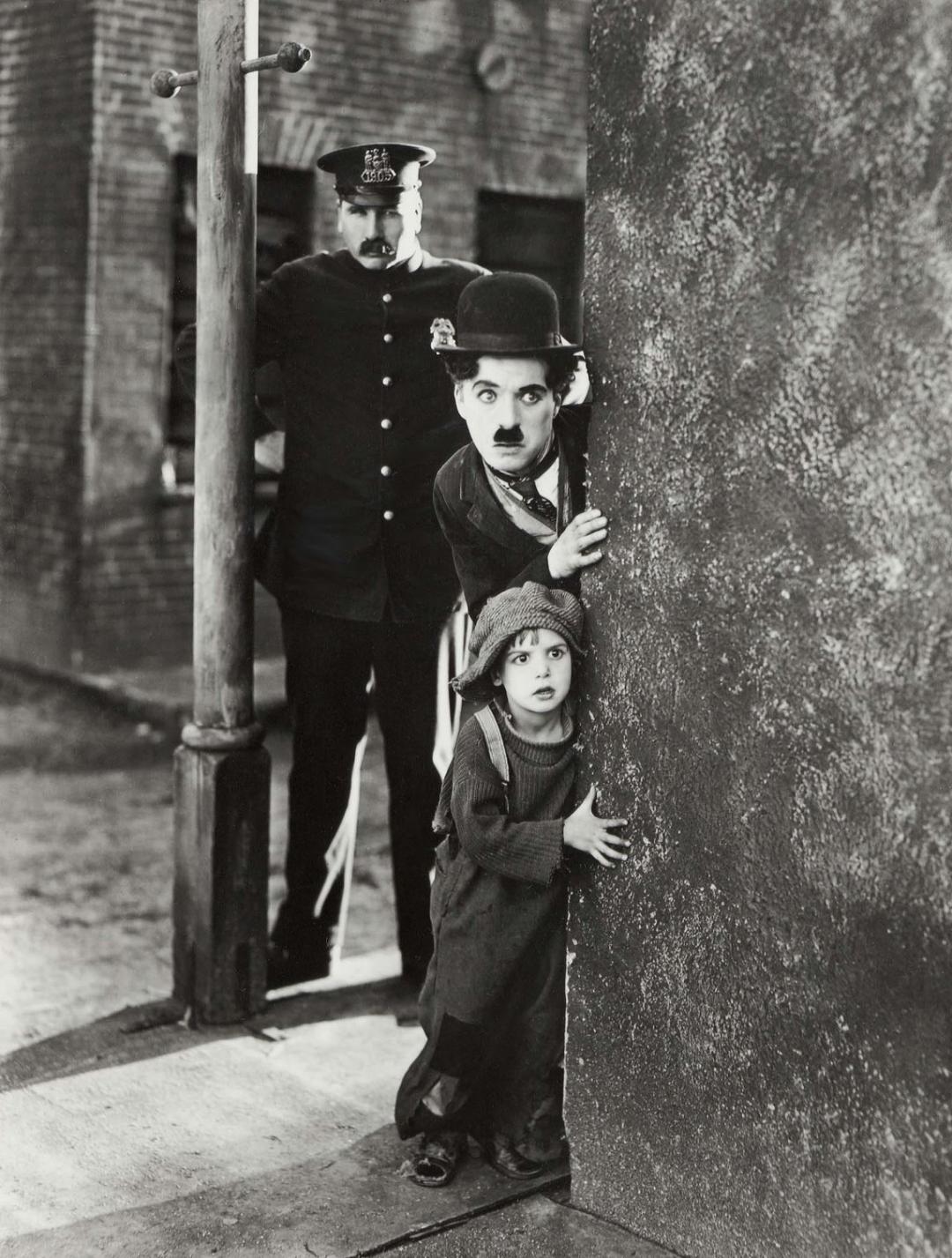
The Story of Finding a Fairy, filmed in 1921, tells the story of a poor woman who abandoned her child, was picked up by a tramp, and was brought up. Later, the child found her biological mother. Chaplin played the tramp Charlot.
Searching for a Fairy and Stage Life are two of Chaplin’s most autobiographical films. The latter is about his aging and death. Charlot, a tramp in The Search for a Fairy, is an adult Chaplin, and Jacques, a little boy, is his childhood.
First, Chaplin saw 5-year-old Jacques Cogan. The little boy wore a cap, a sweater with a hole, and trousers with a belt, which was exactly the same as his childhood. Perhaps it was this child who aroused his childhood memories and came up with The Story of Finding a Fairy.
Chaplin shifted his longing for his father’s love to little Jacques’s attachment to Charlot, and in the film he faithfully reproduced the scene of living alone with his mother in the attic of Bonaire Lane. In the film, the mother first abandoned the little boy Jacques and found him again; The reality is that my father abandoned their mother and son, and my mother went crazy and had to leave Chaplin.
Some studies believe that Chaplin also has a tendency to be insane. At least, the loneliness and fear of childhood made him fall into the tendency of autism. He often confined himself in a room for a long time and didn’t talk to anyone. In his heart, his strong sense of anxiety and fear, and his strong desire for women’s love are all due to his severely damaged childhood.
Perhaps it is through movies that Chaplin constantly reshapes and reproduces the experiences and pains of street children that he can vent his anger and avoid his mental breakdown.
It took a whole year from the filming to the completion of "Finding a Fairy", which was his first feature film and was released in February 1921.
In September of the same year, Chaplin returned to London after a long absence, and received an unprecedented grand welcome. Within three days, he received 73,000 letters, postcards, etc. The luxurious Ritz Hotel was surrounded by excited people. Chaplin sneaked out from the side door of the hotel and drove to Lambeth, the neighborhood where he lived as a child.
The brick house in Baonaer Lane is still dilapidated, and the stairs are still dark, smelly and creaking. He climbed to the top floor and knocked at the door at one breath. The top floor room is almost the same as the room built for filming The Story of Finding the Fairy: "A bed is against the wall, two chairs, an old table, kerosene lamps glow dimly, and the kettle on the iron stove is humming." (georges sadoul)
This room is the small attic at No.3 Baonaer Lane, where Chaplin and his mother finally lived together. After her mother left crazily, the furnishings of this room did not change at all. The tenant at that time was Mrs. Reynolds, who solemnly received this great unexpected visitor. Chaplin cried …
There are two other things that influenced Chaplin’s life in the neighborhood where he lived and wandered in his childhood.
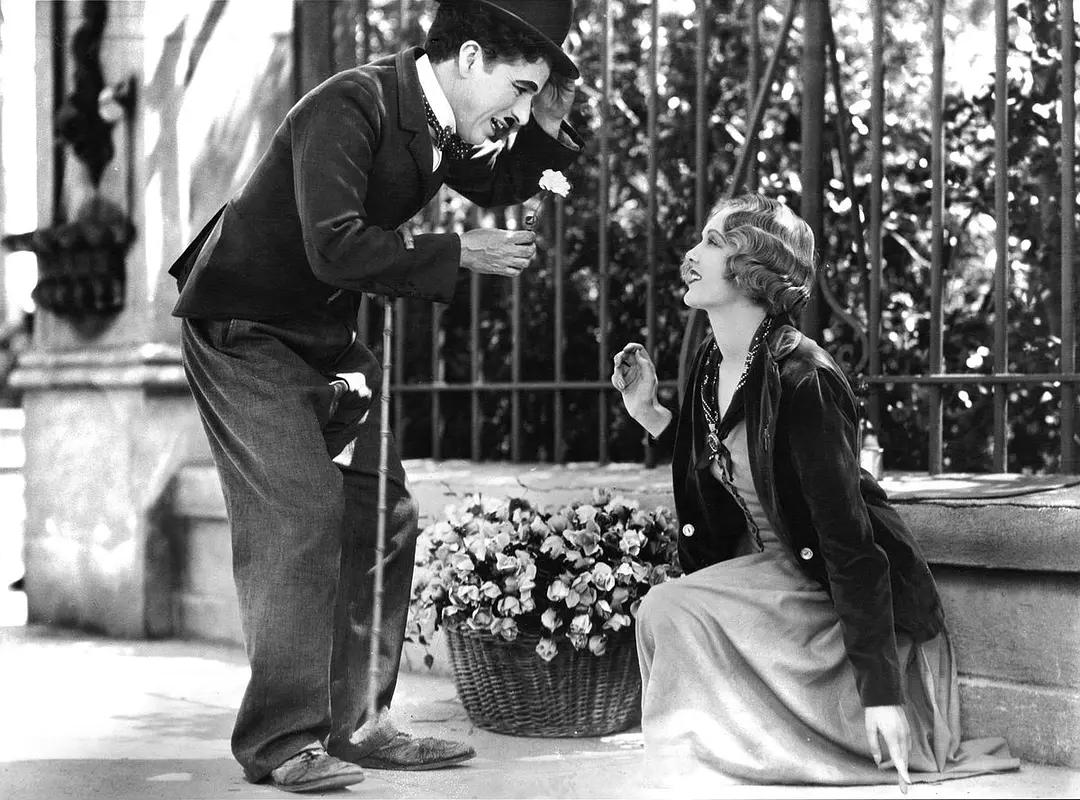
In 1931, "City Lights" told the love story of a tramp and a flower girl, and Chaplin played the tramp Charlot.
One night, lonely little Chaplin dragged his tired and hungry body wandering on Kennington Road-
Suddenly, a burst of intoxicating music came from the lobby of the White Deer Hotel at the corner and echoed melodiously in the empty and deserted square. How sweet it sounded. This piece of music is full of emotion and lively tone. I have never paid attention to such touching music. It really gives people a warm and comfortable feeling (Autobiography of Chaplin).
Chaplin followed the music and forgot his miserable situation.
According to georges sadoul, Chaplin Jr. was fascinated by the music of the street organ, and would involuntarily follow him through several streets and improvise with the music. Music is so sweet, so mysterious, it speaks directly and conveys love.
At the age of 16, Chaplin began to play the violin, practicing for four or five hours every day, eager to become a chief violinist. The girl who danced to the music in the street in Modern Times, Charlot who sang impromptu in the restaurant, and the Jewish barber who shaved his head with the rhythm of music in The Great Dictator all conveyed Chaplin’s love for music, which is to reproduce his childhood musical memory, right?
Many directors began to make movies with sound, but Chaplin was still infatuated with silent films, thinking that pantomime was the real art, and he personally provided the music for the film-"A wonderful concert added emotion to my laughter. Hazlitt once said that a work of art without feelings is not complete at all. " Emotional music makes the silent picture flow, the characters come alive, and the silent film has a soul.
On another occasion, on the road in Kennington, Chaplin saw people killing sheep, and the sheep escaped. People ran around to catch sheep, and there was chaos everywhere. The scene was very funny. He burst into laughter at the sight. But the sheep was finally caught back and eventually killed. This sad reality made him very sad again. He ran home and cried to his mother, "They are going to kill it! They are going to kill it! "
Chaplin said: "So later I often guessed that the theme of the tragicomedy mixed in my movies might have originated from this incident." (Autobiography of Chaplin) This is also the reason why his films can make people "tremble with laughter, but can’t stop tears from flowing up" (louis aragon). !
3. Only when facing love can he be brave and witty.
Charlot, of course, is not just Chaplin’s own export.
There is no doubt that a director or writer can impress his audience (readers) only by starting from himself and sincerely pouring out his feelings, anxiety, confusion and love. Through "watching", the audience finds the part that belongs to their own humanity in the object, which is empathy, or "empathy" and "empathy".
We see our hesitation, cowardice and confusion in Hamlet, and we also see ourselves in Charlot.
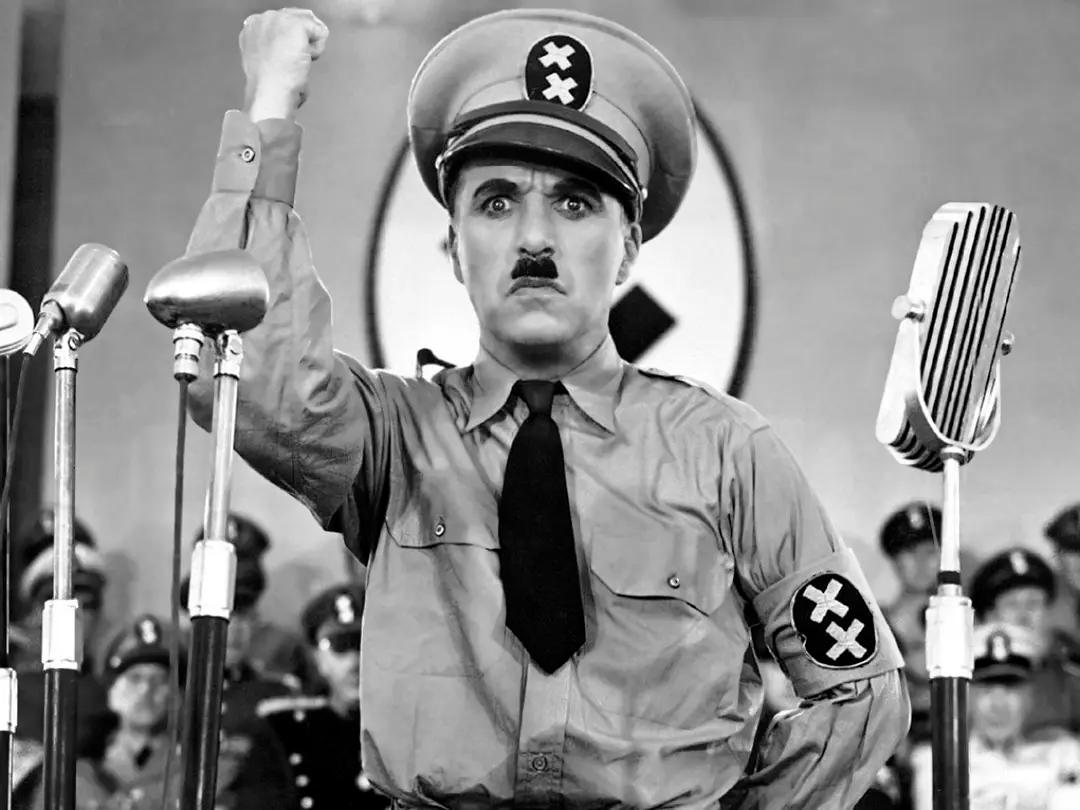
The Great Dictator, filmed in 1940, tells the story of a great dictator who brutally persecuted Jews and tried to rule the world. Chaplin played the role of dictator henkel and Jewish barber Charlot.
Dressed like a gentleman, Charlot is sometimes a porter, cleaner and repairman, sometimes a snow shovel, a glass changer and an assembly line screw, sometimes a soldier, a waiter, a night watchman, a circus handyman, and sometimes a dreamer, a gold digger and a girl-pleasing singer.
In a word, Charlot is at the bottom of society. If anything happens to him, death, disease or crime, it is just a "small probability event" that happens by chance in the process of social development. All those who are insulted and damaged are just a piece of paper stuck to the soles of shoes in the eyes of those who are above, and can be wiped off casually.
However, from Charlot’s point of view, he never wanted to resist, and he was by no means a revolutionary with firm convictions or a sociopath with strong inner strength. On the contrary, he tries to emulate a gentleman and is willing to be a positive, cheerful and enterprising young man.
That set of Charlot-style clothes is his imitation of "successful people". He learns from a gentleman to politely take off his hat and bow, holding a cigar or cigarette butt he picked up.
In Modern Times, Charlot is in prison, drinking coffee "elegantly" by imitating the wife of an inspector.
In the shabby house, he imitated a gentleman to get up and swim in the morning and read the newspaper while eating breakfast;
Charlot and the girl were chased by the police, hungry and tired, sitting on the grass in front of a middle-class garden house, and he cheerfully described the future for the girl:
They have such a garden house. When Charlot came home from work, his beautiful wife greeted him. When he wanted to drink milk, the cows came over automatically and wanted to eat grapes. They could pick them at the window. They were sitting at the table covered with beautiful tablecloths and happily cutting big meat and bread …
The "illusion" disappeared, and Charlot and the girl were still sitting in front of others, still hungry and homeless. When they saw the police, they quickly got up and ran away …
When we see these scenes, we will never laugh at Charlot’s "superficial" pursuit, instead, our eyes are covered with tears … Isn’t this the basic requirement of a pair of ordinary people for food and clothing? Aren’t those "successful people" leading and shaping the life direction and meaning of the bottom people?
So far, I will see Charlot in my kind relatives, watching them learn from the polite manners of the upper class, trying to increase their knowledge, and believing in the news fed by the media.
However, the gentlemen who Charlot tried to emulate, those who made the rules of the game and led the trend of life, in turn mocked and despised Charlot, saying that they were just "fools" and "untouchables". Once the trouble happened, Charlot was the first to be abandoned, trampled and sacrificed.
Charlot has all the shortcomings of ordinary people.
He is lazy (in "Modern Times", he secretly smokes a cigarette while going to the toilet, and then files his nails when he returns to the assembly line, so that it is cost-effective for his colleagues to work for one more minute);
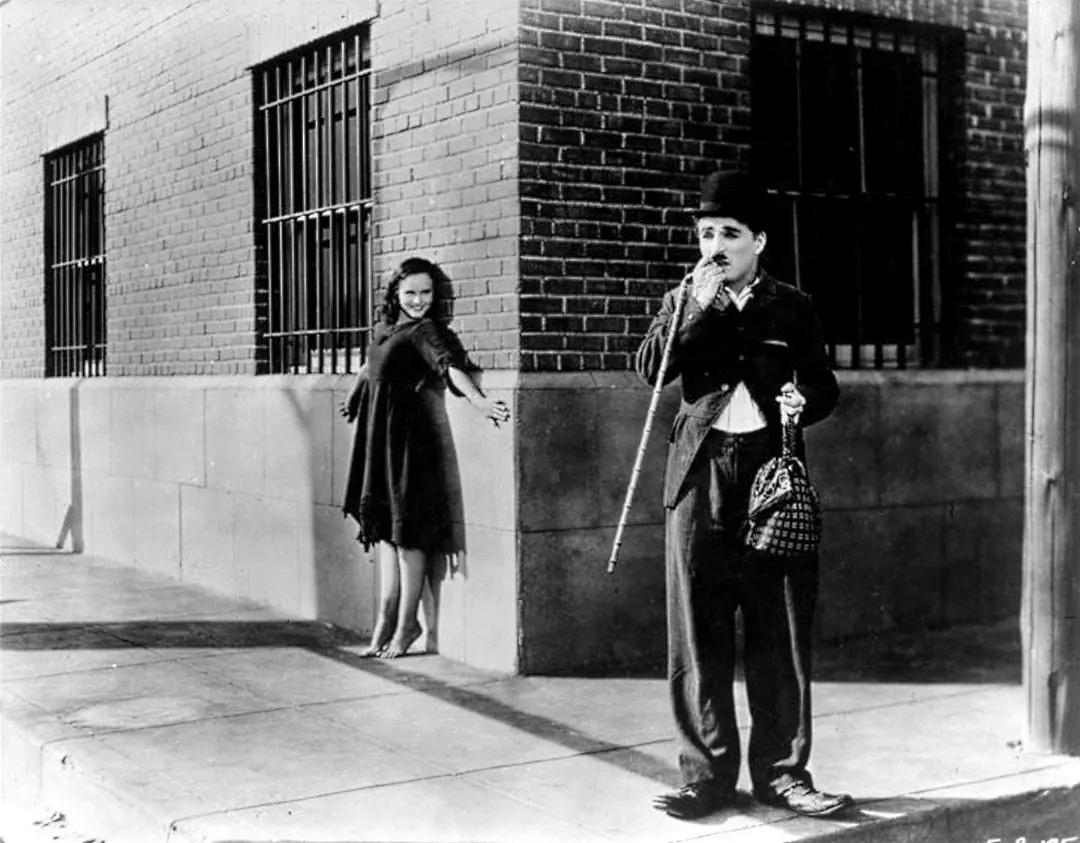
In 1936, "Modern Times" told the love story of a oppressed worker and a homeless woman. Chaplin played the role of worker Charlot.
He is slick (in Modern Times, the mechanic’s crushed pocket watch, he said, can be used as a shovel);
He was late (the cleaner in City Lights);
He is stupid (in "Modern Times", he looked for a wooden wedge but made the ship leave the dock halfway);
He is clever (in "Modern Times", the factory recruits workers, and Charlot suddenly turns left and right among the unemployed job seekers, and squeezes in one second before the factory gate closes);
He is bad (in the story of finding a son and meeting a fairy, he first lets the children throw stones and break the glass of others, and then pretends to be a glassmaker to change the glass; In The Gold Rush, in order to buy Christmas presents for the girls, he shoveled the snow for others, shoveled the snow from one family to the next door, and then shoveled it.
He lost no time in teasing the woman;
He stole the cigars from the shop;
In the face of boxers who are bigger and stronger than him, he shows a flattering smile of women …
Because of these shortcomings, Charlot is rich, diverse and full of personality.
Charlot’s human shortcomings are shared by us, so we can empathize with them, and we can be deeply moved by the father-son relationship between Charlot and Little Jacques in The Story of Finding the Son and Meeting the Fairy. Chaplin has no intention of portraying Charlot as a morally perfect person who does good without asking for anything in return.
Charlot didn’t want to adopt an abandoned baby when he first found it at the garbage bin on the street corner. How can a homeless man who has never had a child and has never had a meal before raise a baby? But it is this lazy, sloppy and idle tramp who still retains the softest kindness and instinctive love of human nature. He instinctively picked up the child and looked around, trying to give it back to his mother.
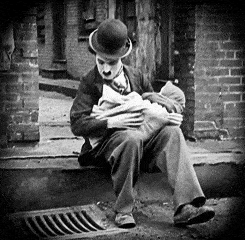
Ironically, several times, he tried to give the child to a mother pushing a stroller, and several times he tried to give it to the policeman, but it didn’t work, because he was considered to be the one who wanted to abandon his child. Charlot’s unwillingness to take responsibility and shirk trouble is completely in line with human nature. He took in the abandoned baby Jacker only under the condition of necessity.
From the initial forced admission to living alone with the child, the little child brought him infinite joy and comforted his loneliness. The arrival of the abandoned baby made his small attic with tearful warmth, and the light of love sprinkled on the dirty bed, floor, windowsill and steaming pot. It was really a paradise on earth. Abandoning a baby is an angel who brings the gospel, so Charlot is reborn, and his kindness, dedication, courage, and the noblest affection and love are all aroused.
From forced adoption, to bravely and tactfully taking back the child from the orphanage car, to the loss of the child, all these are in line with the development of human nature and human feelings. The audience will laugh at Charlot’s teaching children to smash the glass with stones and then pretend to repair it. They will also cry when little Jacques is taken to the orphanage car …
Charlot, who lost her child, dreamed of becoming an angel with her son, as if to fly over the dark and miserable world. When she was swimming happily, suddenly, her wings were broken and planted. How lonely and confused it was-a tramp would never fly out of this world …
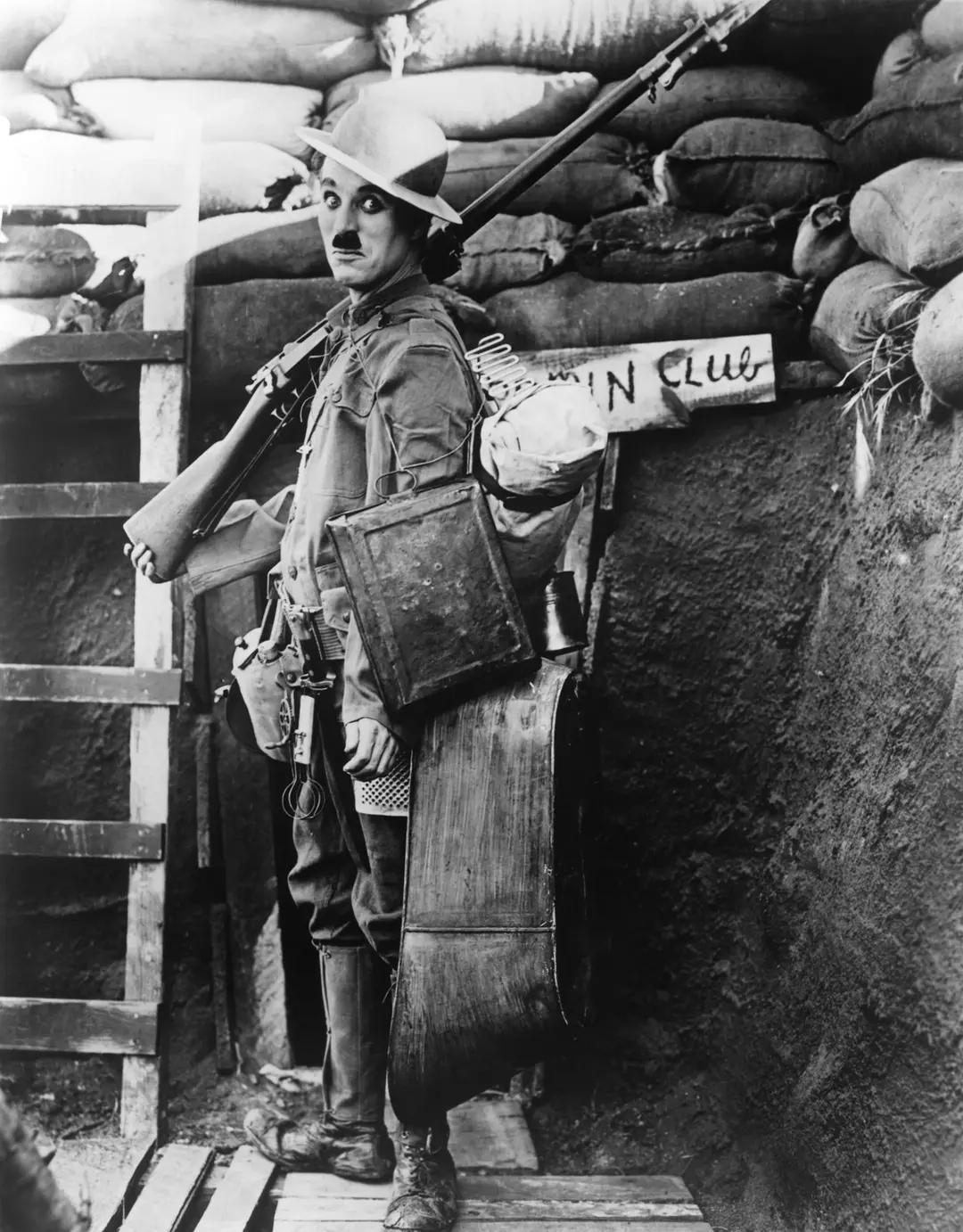
In 1918, "Joining the Army" tells the story of a gag recruit who won great achievements in the war and woke up only to find that it was a daydream. Chaplin played the role of recruit Charlot.
Charlot, who is full of shortcomings, only shows his noble character when facing love. The story of finding a son and meeting a fairy is like this, and so is the light of the city. After meeting a blind girl, the tramp stopped fooling around and became a conscientious cleaner in order to support her life. In order to cure her eyes, she "snatched" the money that the rich man gave him at night to default during the day and went to prison.
Charlot sweetly played a rich man who supported the blind girl, and accompanied her tenderly. The blind girl said a few words of thanks, and he gave the last bill he wanted to leave for himself to the blind girl. When he heard the blind girl say happily that if her eyes were healed, she could see him, and she immediately showed a frightened expression-ah, how contradictory he was. Of course, he hoped that the blind girl would see the light again, but how lost and sad she would be if she saw that she was not a graceful gentleman, but a tramp in rags.
At the end of the film, when Charlot comes out of prison, his bamboo cane is lost, his hair is getting messy, his pants are getting torn, and he looks so unlucky and sloppy that even the urchin teases him badly, and he falls awkwardly … Just then, he sees his blind girl.
Her eyes are healed, and she is looking at him from the flower shop and giving him a flower with pity and tenderness. When she touches his hand, she finds that this tramp is the "he" she is waiting for. What a shock, surprise and pity her eyes reveal!
At this time, Charlot just smiled and looked at the beautiful girl obsessively, without saying a word. Joy and fear, happiness and sadness came crashing down, pretending to be a gentleman was debunked, and his dignity collapsed. At the same time, a glorious and eternal love of human nature rose again. Through these subtle details and classic bridges, Chaplin excavated the most human part of Charlot with his kind heart, which deeply touched the audience.
Charlot, a tramp, is funny and humble, noble and beautiful, and his dreamy love stirs up laughter and crying in my heart, like music bouncing off an echo wall, echoing in circles and spreading for a long time …
Yes, Charlot was brave and witty and burst into passion only when he faced love. More often, when faced with all kinds of difficulties, this low-level nobody always tries to avoid, deceive himself, or is satisfied with solving problems superficially for a short time. He can do nothing but turn a blind eye to the essence of his predicament.
The short film "The Story of Charlow Joining the Army" is regarded as "making Chaplin rise to Shakespeare’s level for the first time" (georges sadoul), and Delluc said that it is "a film in which no one can bite his hand, and it is a film of crazy self-pity". In this film, there is a classic funny scene: when the enemy catches up, Charlot pretends to be a tree and does not move. There is a similar scene in Circus. In order to escape the police chase, Charlot stands motionless and dresses up as a game puppet …
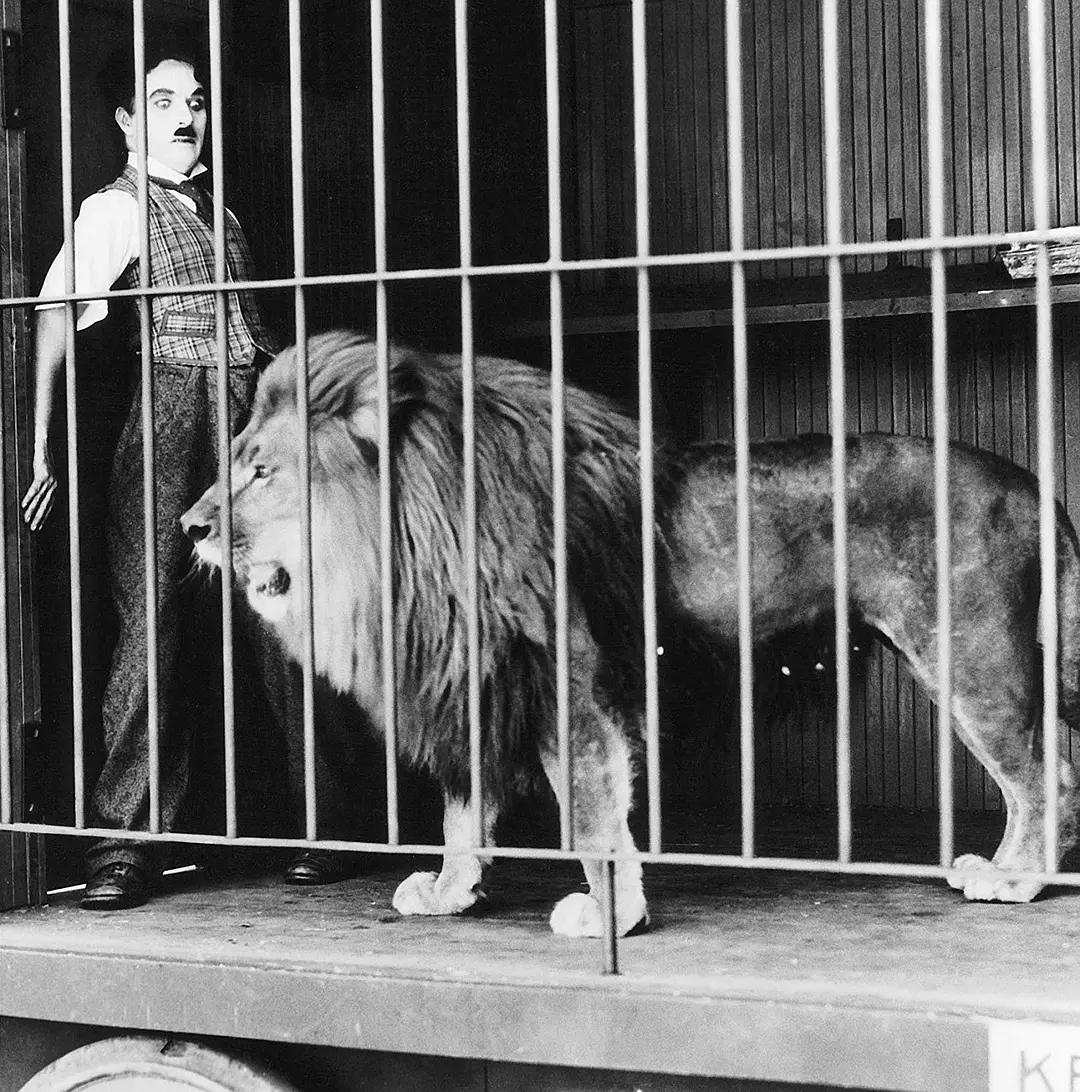
Circus, taken in 1928, tells the story of a tramp who won money but lost love after being wooed by the circus. Chaplin plays the tramp Charlot.
In the face of pressure and predicament, Charlot seems to be only looking for an emergency solution, like a cat catching a mouse, and the mouse subconsciously defends itself. Once the trick is "poked" and the emergency measures fail, it can only flee again and find a new emergency solution.
Charlot is clever, and he seems to have the ability to cope with any situation; Charlot is clumsy again. He has never been able to solve the real problem. He just uses one appearance to overcome another appearance. The problem still exists, and his actions are particularly ridiculous and helpless.
Charlot also made a famous move, that is, "kicking backwards": when he was in trouble, whether it was a banana peel that made him slip or a great danger, his way was to turn around, take him by surprise, kick backwards, and then run away quickly, no matter how hard he escaped.
He kicked back happily, as if to kick off all the fetters that bound him and controlled him. It seems that because of this kick, he gained liberation and freedom, gained the courage to overcome difficulties, and then he could happily deal with new problems.
This kind of "kick backwards" is like "Twenty years later, another hero" written by Lu Xun’s Ah Q. However, Ah Q’s self-deception is more negative and gloomy, and Charlot has a more cheerful, lively and "upward" flavor. Although the audience knows that Charlot can’t solve any problems.
When we saw Charlot, a tramp, we repeated some actions with earnest devotion:
Trying to climb into the carriage, trying to sleep in bed after getting drunk, or trying very hard to find a job, go for gold, shovel snow, and please girls, tears of sympathy and pity welled up at the same time when we laughed at his ridiculous efforts.
Jean Cocqueteaux said, "Isn’t Charlot Kafka’s surveyor K?"
This K, no matter how hard he tries, will never get into the castle, nor see the officials in the castle, and will never solve his confusion.
Hou Mai said: "Funny is a gesture of people in fear. Because fear makes people involuntarily break away from the regular rhythm. "
In the pursuit of inertia, when moving chairs repeatedly, we saw a little person who was in a hurry and had to work hard to overcome the fear of life.
In Charlot, we see ourselves who are lonely, hardworking, but never successful. We see our own humbleness and dignity, anxiety and joy, selfishness and dedication, pity and love in a nobody …
Attachment: List of Chaplin’s Works
Countess from hong kong, 1967
King in new york, 1957
Stage Life, 1952
Mr. Verdu, 1947
The Great Dictator 1940
Modern Times, 1936
City Lights, 1931
Circus, 1928
Gold Rush, 1925
Pilgrim, 1923
A Woman in Paris, 1923.
Payday, 1922
The story of finding a son and meeting a fairy, 1921
Leisure Class, 1921
Pastoral in 1919
"Joining the Army" in 1918
Life of a Dog, 1918
Immigration, 1917
Easy Street, 1917
Tramp, 1915
Between showers, 1914
Making a living, 1914
This article is excerpted from
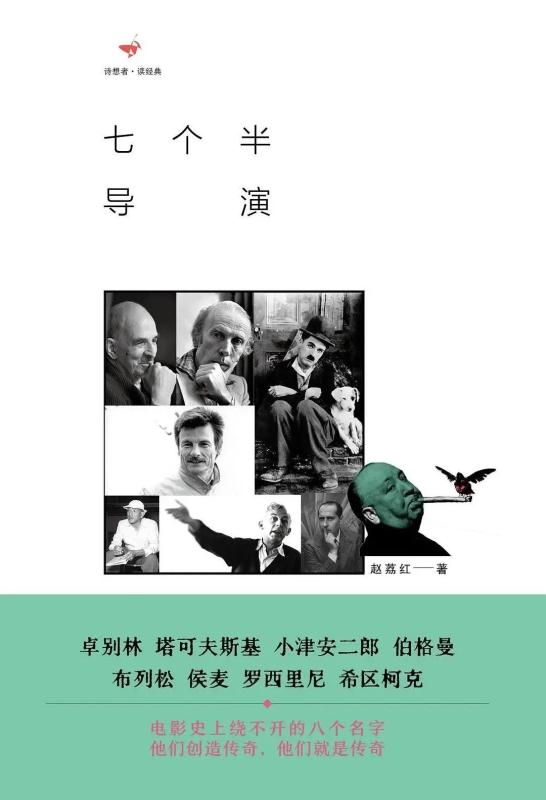
Seven and a half directors
Author: Zhao Lihong
Press: Guangxi Normal University Press Poet Thinker
Publication year: 2022-6
Original title: "Some comedies are forgotten after watching them, but Chaplin has always stayed in our hearts."
Read the original text


























